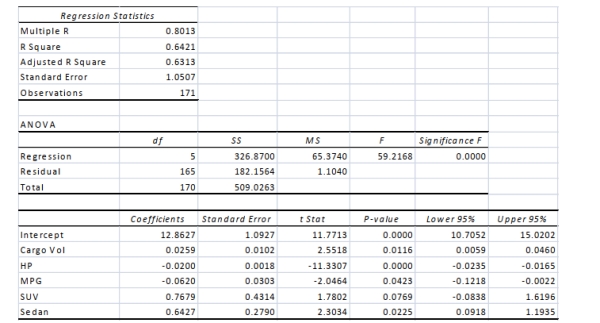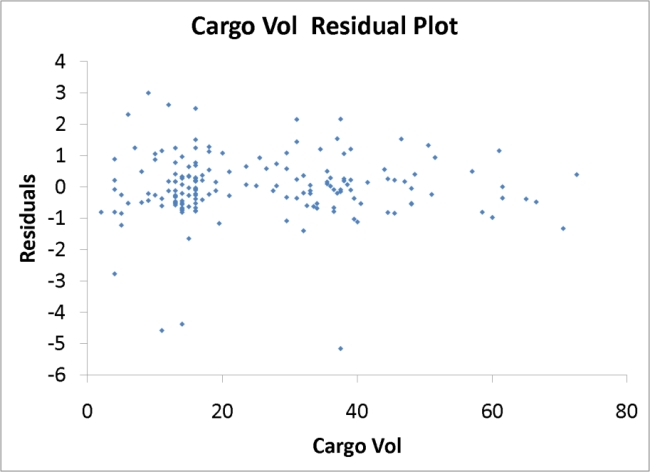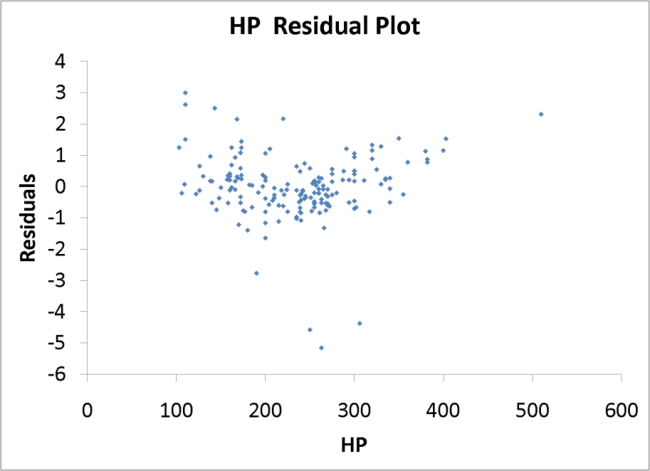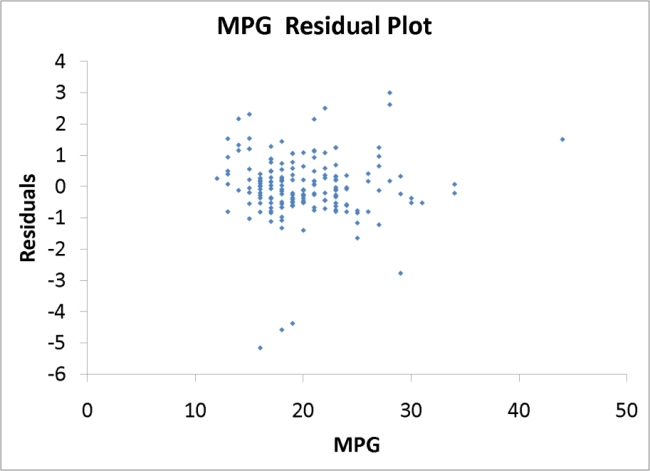SCENARIO 18-9
What are the factors that determine the acceleration time (in sec.)from 0 to 60 miles per hour of a
car? Data on the following variables for 171 different vehicle models were collected:
Accel Time: Acceleration time in sec.
Cargo Vol: Cargo volume in cu.ft.
HP: Horsepower
MPG: Miles per gallon
SUV: 1 if the vehicle model is an SUV with Coupe as the base when SUV and Sedan are both 0
Sedan: 1 if the vehicle model is a sedan with Coupe as the base when SUV and Sedan are both 0
The regression results using acceleration time as the dependent variable and the remaining variables
as the independent variables are presented below.  The various residual plots are as shown below.
The various residual plots are as shown below. 
A Roadmap for Analyzing Data 18-63 


18-64 A Roadmap for Analyzing Data 

-True or False: Referring to Scenario 18-9, the 0 to 60 miles per hour acceleration time of an
SUV is predicted to be 0.1252 seconds higher than that of a sedan.
Definitions:
Handling And Storage
Activities involved in moving and placing products or materials in a warehouse or storage area.
Labour Hour
A measure of work effort, typically used in costing to allocate overhead based on the number of hours worked.
Competitive Bidding
The process where various suppliers or contractors submit their bids to win a contract, often used to ensure fairness and value in public and private procurement.
Sealed Bid
A method of bidding where all bids are submitted sealed and opened at an appointed time, ensuring that no bidder knows the amount of the other bids during the bidding process.
Q10: True or False: In real-world business analytics,
Q17: Referring to Scenario 17-2, which region has
Q20: True or False: Some business analytics involve
Q33: True or False: Referring to Scenario 20-6,
Q56: Referring to Scenario 19-1, what is the
Q60: Referring to Scenario 13-11, which of the
Q63: Referring to Scenario 20-4, what is the
Q72: True or False: Referring to Scenario 14-15,
Q87: An agronomist wants to compare the crop
Q92: The variation attributable to factors other than